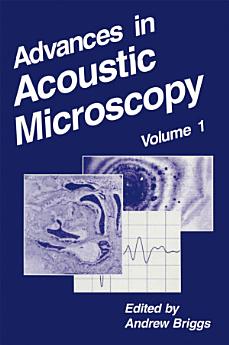Advances in Acoustic Microscopy: Volume 1
nov. 2013 · Advances in Acoustic Microscopy Cartea 1 · Springer Science & Business Media
Carte electronică
350
Pagini
reportEvaluările și recenziile nu sunt verificate Află mai multe
Despre această carte electronică
In 1992 Acoustic Microscopy was published by Oxford University Press, in the series of Monographs on the Physics and Chemistry of Materials. Reviews appeared in the Journal of Microscopy [169 (1), 91] and in Contemporary Physics [33 (4), 296]. At the time of going to press, it seemed that the field of acoustic microscopy had settled down from the wonderful developments in resolution that had been seen in the late seventies and the early eighties and from the no less exciting developments in quantitative elastic measurements that had followed. One reviewer wrote, "The time is ripe for such a book, now that the expansion of the subject has perceptively slowed after it was detonated by Lemons and Quate. " [A. Howie, Proc. RMS 27 (4), 280]. In many ways, this remains true. The basic design for both imaging and quantitative instruments is well-established; the upper frequency for routine imaging is the 2 GHz established by the Ernst Leitz scanning acoustic microscope (ELSAM) in 1984. For the most accurate V(z) measurements, the 225-MHz line-focus-beam lens, developed at Tohoku Univer sity a little before then, remains standard. The principles of the contrast theory have been confirmed by abundant experience; in particular the role of surface acoustic waves, such as Rayleigh waves, dominates the contrast in most high resolution studies of many materials.
Evaluează cartea electronică
Spune-ne ce crezi.
Informații despre lectură
Smartphone-uri și tablete
Instalează aplicația Cărți Google Play pentru Android și iPad/iPhone. Se sincronizează automat cu contul tău și poți să citești online sau offline de oriunde te afli.
Laptopuri și computere
Poți să asculți cărțile audio achiziționate pe Google Play folosind browserul web al computerului.
Dispozitive eReader și alte dispozitive
Ca să citești pe dispozitive pentru citit cărți electronice, cum ar fi eReaderul Kobo, trebuie să descarci un fișier și să îl transferi pe dispozitiv. Urmează instrucțiunile detaliate din Centrul de ajutor pentru a transfera fișiere pe dispozitivele eReader compatibile.







